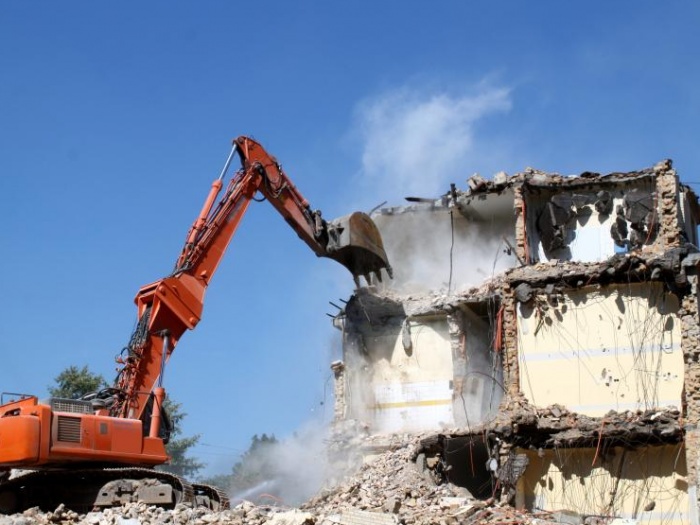Preparing the land
Site clearance contractors can be called in for a broad range of clearance and disposal activities including earthworks, soil levelling, rubble removal and even building demolition.
Projects can vary from the preparation of land for construction, clearance of overgrown or contaminated land, hazardous waste removal or simply clearing areas of fly-tipping rubbish.
Site clearance can require a range of skills and access to the right machinery to clear land quickly, efficiently and safely. Land clearance contractors will offer different packages for a range of services.
Land clearance and site clearance
Although the operations here are somewhat similar there are some differences and it's worth understanding the basics when choosing a contractor.
Site clearance is mainly about preparing land for the construction of buildings. It may involve not only the removal of vegetation and the levelling and landscaping of coil but also the demolition of existing buildings and disposal of rubbish, including hazardous materials.
Land clearance on the other hand usually means removal of natural foliage, the uprooting trees and shrubs, filling in hollows. Often the result is a completely bare area of flat land ready for development.
Both services usually require expertise and experience from the workforce as well as heavy machinery that may include diggers, excavators, bulldozers, tipper trucks and dumpers.
Preparing the ground
A proper assessment and initial appraisal is vital to any site clearance contract. Clearing land can involve a range of services and an expert assessment of what is required can save time and money before the clearance work even gets underway.
Site clearance can be a major undertaking, especially if buildings need to be demolished or hazardous materials removed from the site. Good planning along with a thorough knowledge of relevant health and safety legislation will help to guarantee a professional result within time and budget constraints
There may also the question of recycling to be considered. Not long ago many site clearance contractors simply sent waste to the local landfill. Nowadays there a much greater emphasis on recycling not only to help the environment but also because it makes economic sense.
Bricks from demolished buildings, for example, can be used an aggregate on other parts of the site, wood from uprooted trees can be chipped for composting and materials such as metal and glass sold on to be melted down and reused.
Advance planning is essential for efficient and cost-effective site clearance but especially so if the work involves the removal of hazardous materials. Site worker safety and risk assessment is always a major consideration in any clearance process but especially so when contaminated or dangerous waste is involved.
Using the right equipment
Site clearance will often involve the use of heavy plant and specialist machinery. Clearing woodland, for instance, may require specialised branch lopping tools or heavy machinery to uproot trees and dig out deep-lying root systems.
There is bound to be a lot of debris following woodland clearance and much of it may need to be stockpiled before it can be reused or recycled. Wood chipping and mulching machines may be used on site to ease the problems of transporting foliage away from the site.
Modern mulching machines can grind down foliage and leaves to small shreds for easy transport while feller bunchers and wood tree chippers can do much the same for branches and tree trunks.
Building demolition requires both specialised equipment and expert knowledge. A site clearance contractor with professional expertise and the relevant equipment is essential to ensure all demolition work is carried out efficiently and in accordance with the appropriate regulations.
Safety first on the clearance site
Site clearance usually involves the use of heavy machinery in a hazardous environment so health and safety regulations must be adhered to at all times to ensure both the workforce and other site personnel are free from danger and from possible injury.
Before anyone enters a clearance area it is essential to erect signs to indicate the nature of the works to inform personnel of the dangers and the safety requirements that are in force, such as the wearing of high visibility clothing and hard hats at all times.
The use of suitable machinery by experienced drivers is not only vital for health and safety at work but also to avoid wasting time and money. An experienced and confident driver not only works more efficiently but will be a safer driver too.
Clearing up afterwards
So it's clear that site clearance involves a broad range of skills, a variety of machinery and equipment, a deep understanding of the problems that can be thrown up in any land clearing operation and a thorough knowledge of health and safety legislation.
Site clearance can involve the removal of waste, building demolition, tree cutting and the grubbing out of stumps and roots, as well as handling of hazardous materials.
The sorting, storage, transport and recycling of materials from the site is just as important nowadays to satisfy legal requirements and to ensure projects are completed on time and within budget.
Equipment can vary from powered hand tools such as chainsaws to heavy bulldozers and other earthmoving equipment. Not only must the machines be fit for the job and well maintained but operators need to be experienced and experts in their field.
Whether it is clearing woodland for construction, preparing land for new developments, demolition of buildings, handling hazardous materials or simply clearing up fly-tipping sites, the work often requires a considerable amount of planning, organisation, personnel and equipment.
Your site clearance contractor should be able to demonstrate all the above skills and have access to the tools and machinery needed to clear a site in a professional and efficient manner.
Clark & Kent Contractors are experts at site clearance. Give us a call now on 01630 672329
COMPANY NEWS







